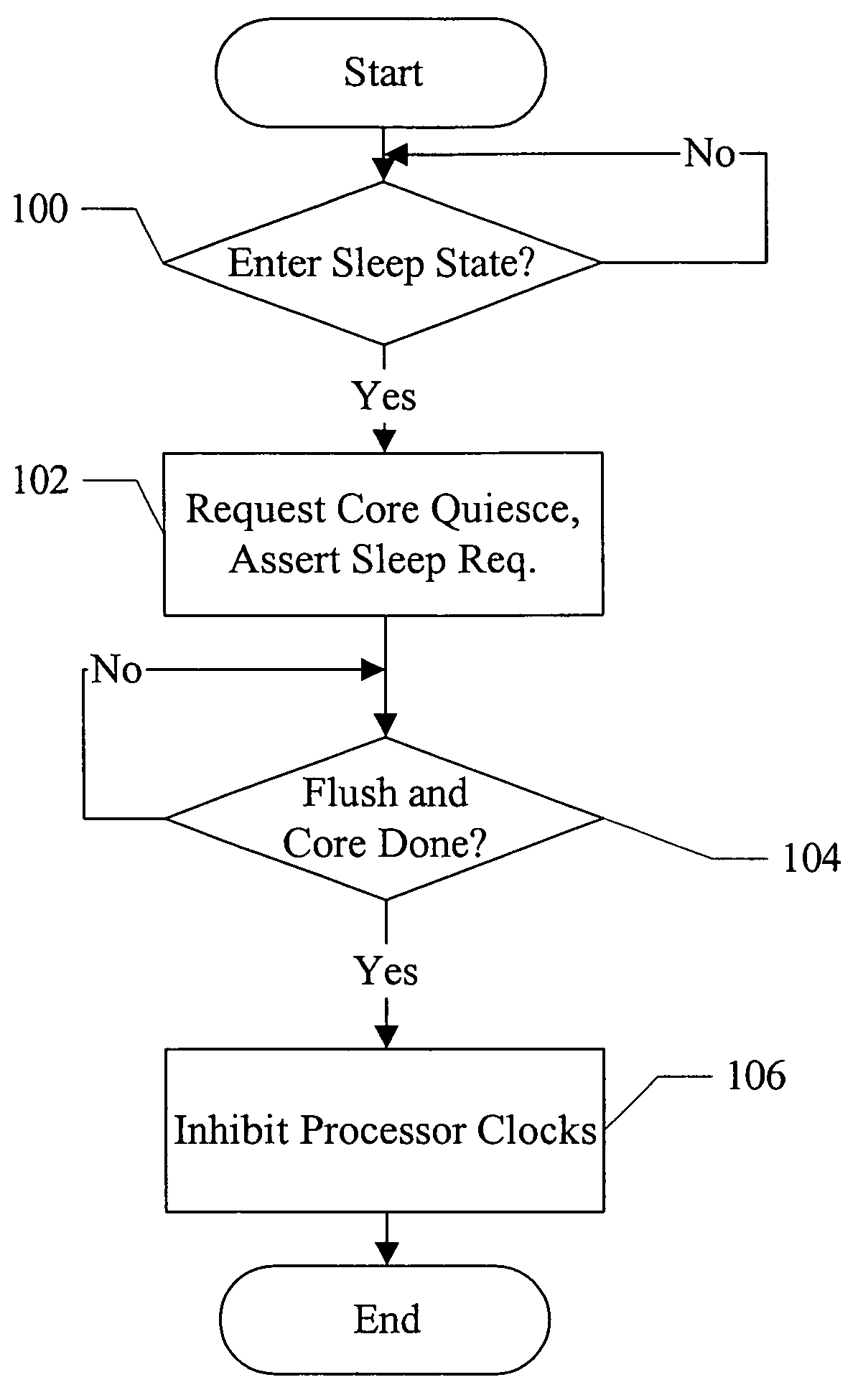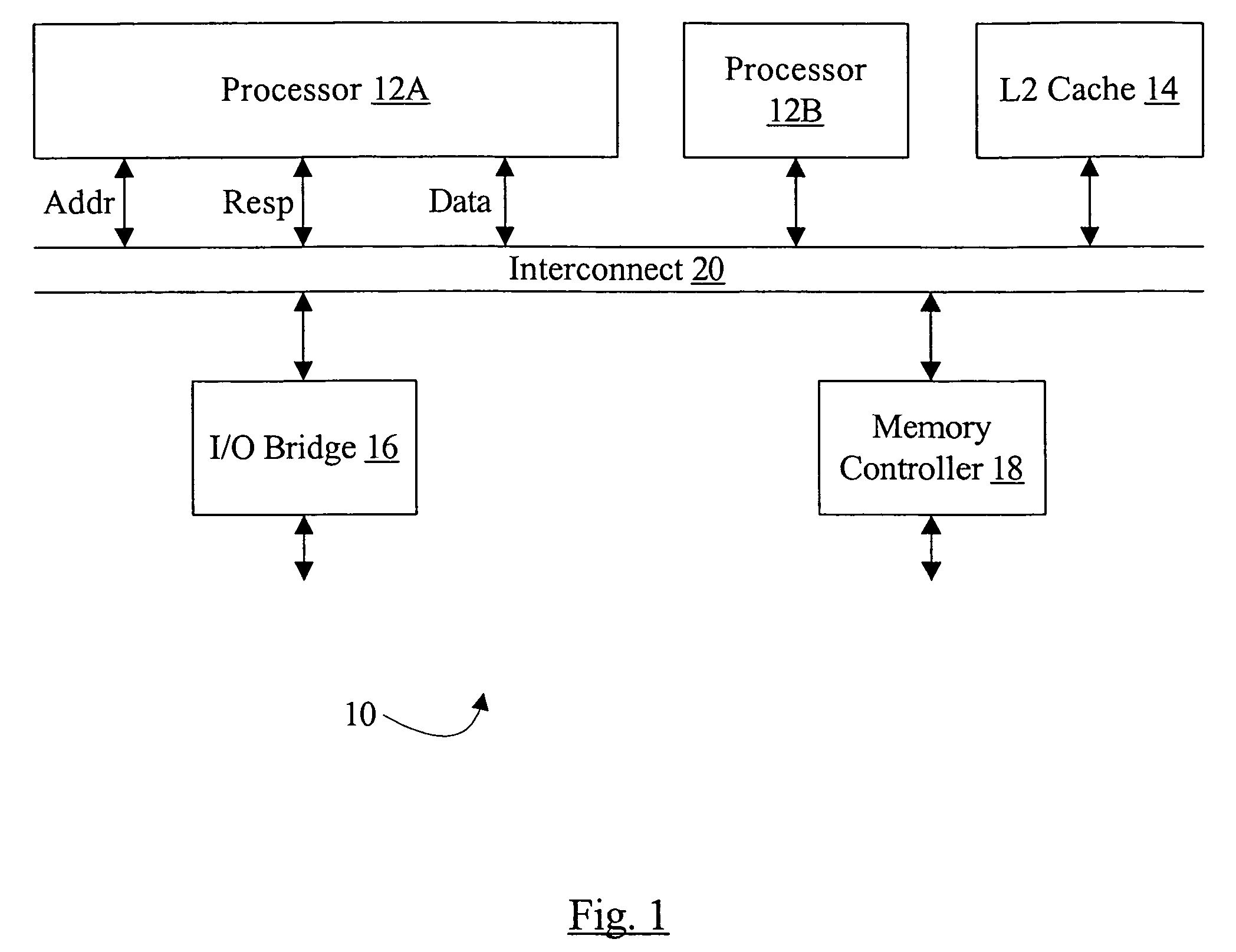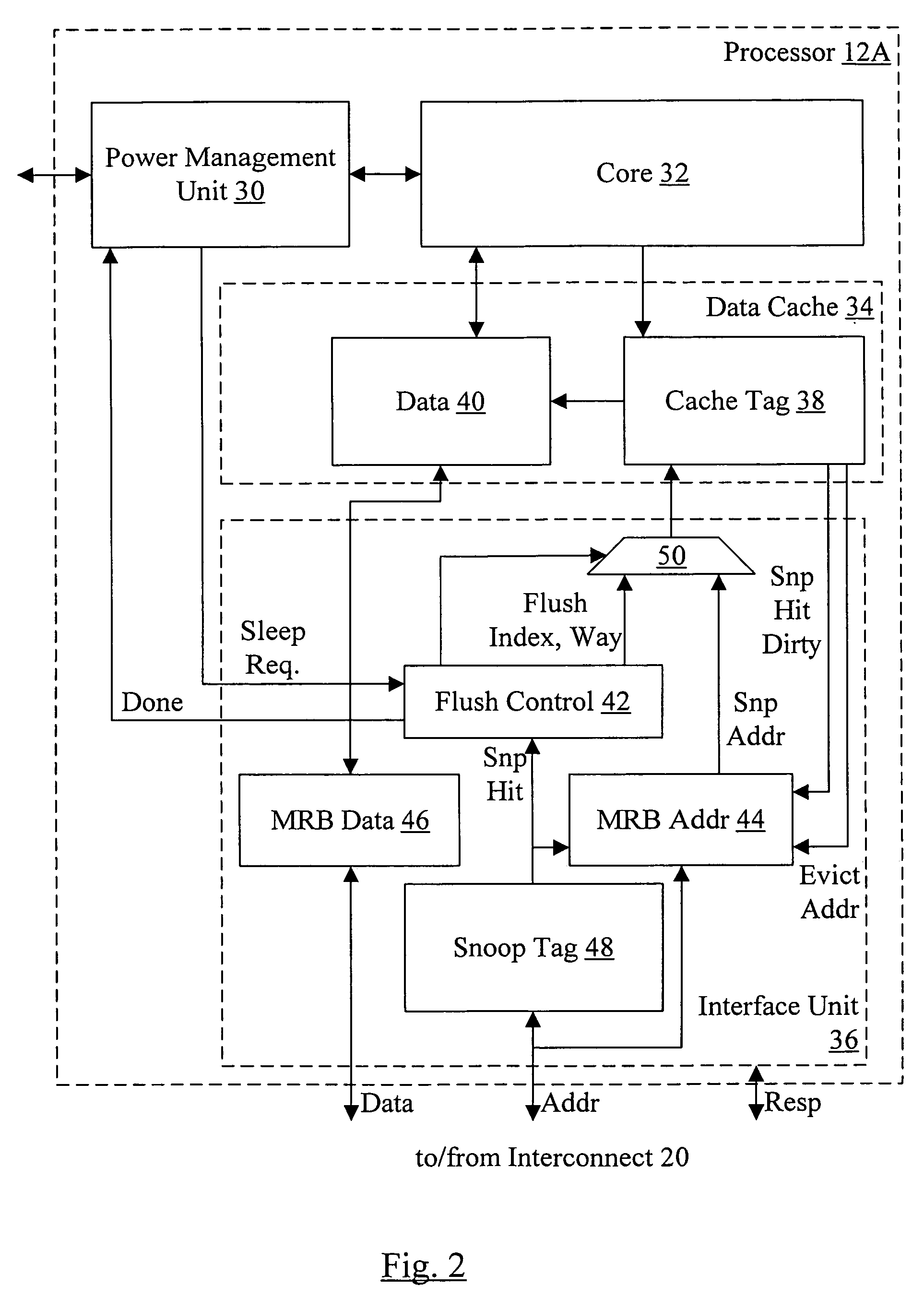Fast L1 flush mechanism
a technology of l1 and l1, applied in the field of fast l1 flush mechanism, can solve the problems of affecting the overall processor design, and affecting the accuracy of the overall processor
- Summary
- Abstract
- Description
- Claims
- Application Information
AI Technical Summary
Benefits of technology
Problems solved by technology
Method used
Image
Examples
Embodiment Construction
System Overview
[0017]Turning now to FIG. 1, a block diagram of one embodiment of a system 10 is shown. In the illustrated embodiment, the system 10 includes processors 12A-12B, a level 2 (L2) cache 14, an I / O bridge 16, a memory controller 18, and an interconnect 20. The processors 12A-12B, the L2 cache 14, the I / O bridge 16, and the memory controller 18 are coupled to the interconnect 20. More particularly, as illustrated with regard to the processor 12A, the agent coupled to the interconnect 20 may communicate via transactions having address, response, and data phases on the interconnect 20. While the illustrated embodiment includes two processors 12A-12B, other embodiments of the system 10 may include one processor or more than two processors. Similarly, other embodiments may include more than one L2 cache 14, more than one I / O bridge 16, and / or more than one memory controller 18. In one embodiment, the system 10 may be integrated onto a single integrated circuit chip (e.g. a sys...
PUM
 Login to View More
Login to View More Abstract
Description
Claims
Application Information
 Login to View More
Login to View More - R&D
- Intellectual Property
- Life Sciences
- Materials
- Tech Scout
- Unparalleled Data Quality
- Higher Quality Content
- 60% Fewer Hallucinations
Browse by: Latest US Patents, China's latest patents, Technical Efficacy Thesaurus, Application Domain, Technology Topic, Popular Technical Reports.
© 2025 PatSnap. All rights reserved.Legal|Privacy policy|Modern Slavery Act Transparency Statement|Sitemap|About US| Contact US: help@patsnap.com



